Are you bent on becoming an auto blogger but unsure of what to do or where to begin? Let me show you the way!
Why This Guide Rocks?
These days, creating a car blog isn't difficult, and to tell you the truth, blogging itself isn't hard either. All you have to do is type a few words and click a few buttons.
Hyperbole aside, blog creation doesn't require much capital or technical know-how. Seriously, It's so easy that a squirrel could do it. Heck, even I managed to figure it out.
I must warn you, however. If you hope to one day sip Pina Coladas on your private beach in the backyard of your second vacation home, you'll need more than a few crummy dollars and an internet connection.
Above all else, you'll need to demonstrate immense commitment and determination to succeed. A large amount of initial enthusiasm isn't going to cut it. Starting a car blog is easy; the hard part is sticking to it.
If you stick with it, I promise you'll see that those bayside Pina Coladas I mentioned earlier aren't that far away. So, what are you waiting for?
Earning a living from blogging isn't hard, but it does take time, which can be expedited depending on your level of effort, but you'll never get there if you don't start today.
I wish someone had introduced me to the world of blogging when I was in my twenties. Looking back, knowing what I know now, I wouldn't have postponed the idea of blogging for so long!
So, If you're ready to take control of your life and be your own boss, then you need to start a blog. In this article, I will walk you through each step, from creating a car blog and setting it up to generating revenue.
Now, let's go. You're new blogging journey awaits you!
Carve Out a Niche
You must first identify your niche to create a successful car blog and establish your domain authority. The niche you choose for your blog is a specialized area you will focus on when writing content.
You can produce more relevant content for your targeted audience by narrowing down your car-related niche. If you attempt to cover a broad category such as “cars,” you will be quickly overwhelmed and may never get off the ground.
Ideally, you want a blog that covers a specific niche large enough to be worthwhile but isn't so narrow that you quickly run out of ideas.
Car Niche Examples
Here are some car-related niches to help you brainstorm some ideas.
Door Locks and Alarms for Cars
Vans
Car Repairs
Car Batteries
Specific Car Brands
Sports Car
Driving Lessons
Affordable Vehicles
Ice Cream Trucks
Best Pickup Trucks
Personal Cars
RV Accessories
Car Insurance
BMW
Scooters
Limousines
Car Auctions Car Chargers
Car Maintenance
Best Used Cars
Luxury Cars
Heavy-Duty Vehicles
Economy
SUV
Buying a Used Car
Off-Road
Car Loans and Financing
Latest Vehicles
Car Tires
Buses
Family
Passenger Vehicles
Vintage Cars
Racing Cars
Electric Cars
Analyze Your Audience
Understanding your target market is an important step toward knowing what kind of car-related posts to write, how to structure them, and, ultimately, what sort of content to create.
Finding your audience – the group of readers you're trying to attract through your blog – isn't just numbers and demographics. You need to understand who they are and what they want from you.
Whether you're writing for moms, car enthusiasts, or people who just enjoy upgrading their cars, the more you understand your audience, and what excites them, the better you can reach them.
Methods and Strategies
To analyze your target market of car enthusiasts, try the following:
- Analyze your competition and influencers or brands in your niche
- Identify and talk to niche-specific individuals in person
- Search for your target audience on Google
- Use social media to find your target audience
- Identify and browse online forums
- Utilize a known source of statistics, such as the Pew Research Center
- Read books about your niche and get in touch with the authors
- Watch YouTube videos and listen to podcasts
- Check out the comment sections on competing blogs
- Visit Quora to browse car-related questions
How to Start a Car Blog for Free

If you're still unsure if blogging about cars is for you, I completely understand. The sheer thought of where to begin and the fear of failure are crippling for many new bloggers.
If this sounds familiar, don't worry! There are a few simple ways to get your car blog up and running completely free with no commitments whatsoever. But first, let's examine the pros and cons of using this approach.
Pros and Cons of Free Hosting
Free blogging platforms typically provide the hosting for you and offer paid upgrades for premium tools and features like custom domain names.
While free blogging platforms are somewhat limited in their capabilities, they are fantastic options for new bloggers that want to dip their toes in the water. And the best part is you can start monetizing your car blog all without spending a dime.
Without further ado, here is a list of the best free blogging platforms you can use to start your very own car blog.
WordPress
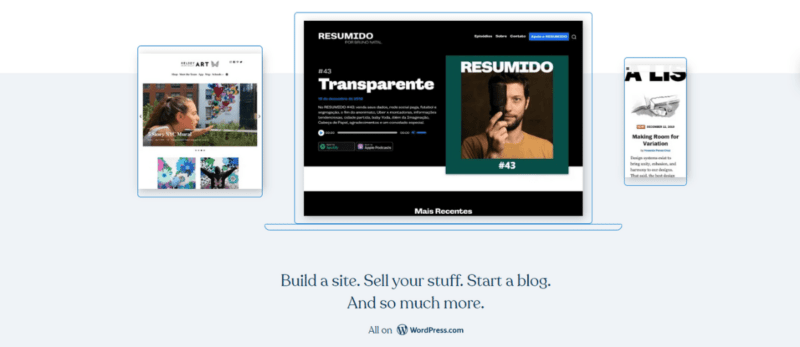
In contrast to WordPress.org (an open-source content management system for self-hosting WordPress), wordpress.com makes it easy to start a blog in minutes. Get started sharing your ideas today by signing up for free.
Once your car blog is up and running, you can start monetizing it immediately using Amazon and WordAds to earn money from your hard work.
Blogger

Blogger is a free blogging platform owned and hosted by Google. The only requirement is a Google account to access everything Blogger offers.
And because Blogger is Google-owned, setting up your car blog to earn money through Google AdSense is as easy as it gets!
Medium

Founded in 2008, Medium is an independent social publishing platform featuring stories, ideas, and perspectives from every part of the world.
Once you acquire 100 or more followers on Medium, you can (pat yourself on the back) apply to start earning from your work.
How to Self-Host a Car Blog
If you're serious about generating a livable income from blogging about cars, I highly recommend self-hosting WordPress instead of using free blogging platforms.
Pros and Cons of Self-Hosting
By this, I'm referring to wordpress.org, not to be confused with the free blogging platform wordpress.com. While wordpress.org is technically free, open-source software, you'll need to purchase hosting to install it.
While this route requires a little capital to start, the payoff is worth the extra effort. If you're serious about starting a car blog and building a brand, this is the only way to go.
If you're still a little hesitant, that's 100% okay! As I said earlier, it really isn't that difficult. Plus, you're in good hands. I'm going to make this as painless as possible.
1. Choose a Domain Name
A great deal of choosing a domain name for your car blog is a matter of personal preference; however, here are some good guidelines you can follow to get started:
Avoid hyphens and numbers. Don't use hyphens or numbers in an attempt to get creative. People generally have trouble remembering stuff like this.
Choose a relevant topic. The name of your website must reflect the topic of your website so that visitors can better understand what your content is about. In this case, it should be related to nothing other than cars.
Use a .com if possible. Despite the popularity of other domain extensions, choosing a .com domain name is still preferable.
Make it brandable. The goal is to have something easy to recall so that people will remember your blog and hopefully return to it.
Choosing a domain name is tricky since domain names can only be owned by one individual at a time. Therefore, you need to find an available domain name to purchase one. There are several tools available that can simplify the process, but my favorite, by far, is Instant Domain Search.
Using Instant Domain Search, you can instantly check whether a domain name is available by entering your desired domain name. You'll also get suggestions for similar domains as you type if the name you're looking for is already taken.
To start, begin by typing in car-related domain names, and you'll see the results populate as you type. Pretty cool, aye?
2. Purchase Hosting
The next step to starting a car blog is to purchase hosting from a reputable hosting provider. This will be used to install your WordPress application.
Unlike many other blogs out there, I am not going to suggest a lousy host like Bluehost. Why? Because people despise them, they're owned by Newfold Digital and aren't even BBB accredited. I made the mistake of using them many years ago, which was painfully awful.
Instead, we're going to use HostArmada. Why? Because according to the extensive performance testing I did a few months back, HostArmada constantly topped the charts and boasts fantastic reviews everywhere you look.
Additionally, the renewal fees for HostArmada are even cheaper than Bluehost! It's a win all around, no matter how you look at it.
To complete this step, use the link above for 70% OFF any plan, enter your chosen domain name (see below) from earlier to register the domain, and complete the checkout process.
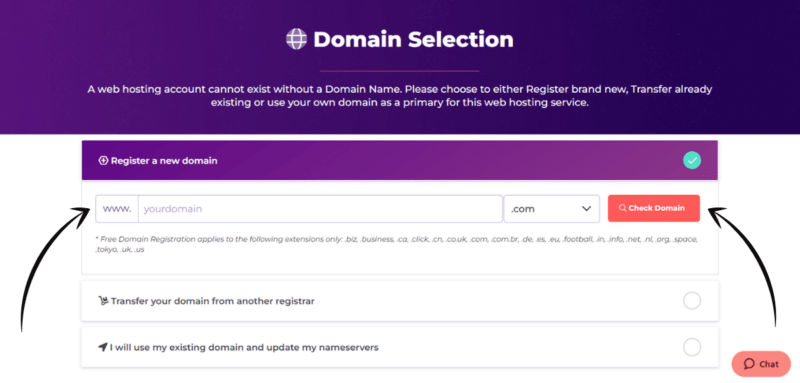
Make sure you select the data center closest to your target audience (or yourself if you're unsure).

Once you've purchased your hosting package (I recommended the Start Dock plan above), it's time to install WordPress.
3. Install WordPress
Before you can start blogging about cars, you first need to install your WordPress application. Follow the steps below to continue:
Step 1: Navigate to My Services and click to open the Control Panel.

Step 2: Scroll down to the Software section and click WordPress Manager by Softaculous.
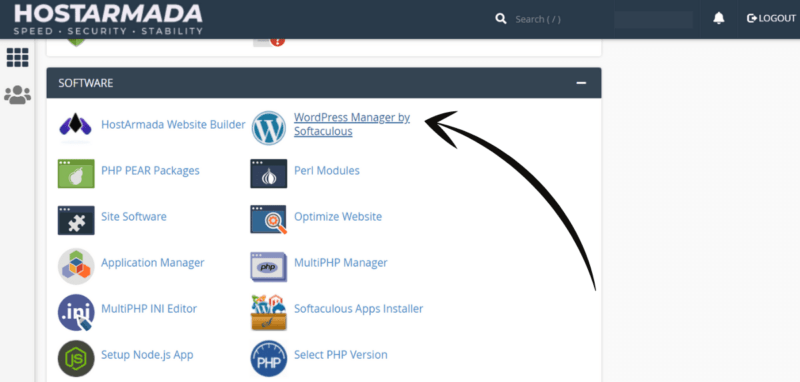
Step 3: Click Install.
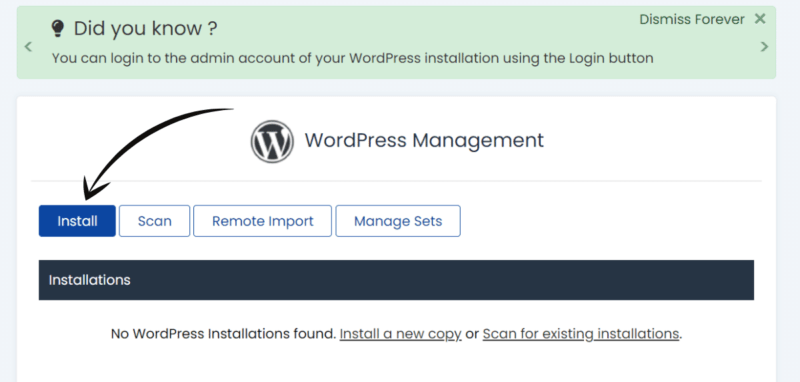
Step 4: Check that the domain name is correct, and enter your desired Admin Username and Admin Password (no need to worry about anything else).
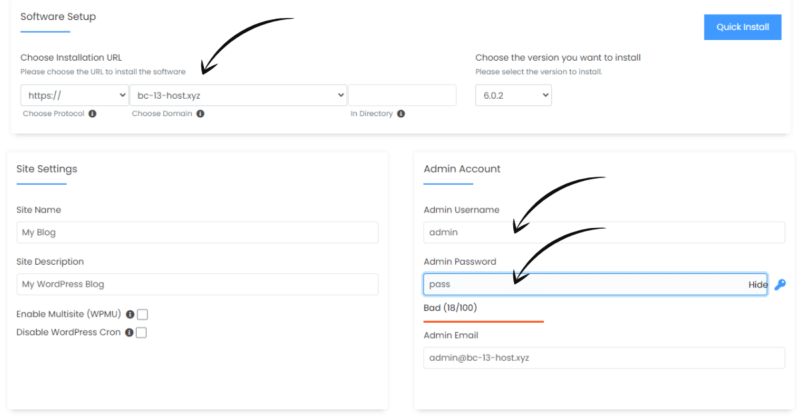
Step 5: Scroll down and click Install again.

And there you have it. You can log in to your newly created car blog by adding /wp-admin/ to the end of your domain name. For example, mywebsite.com/wp-admin.
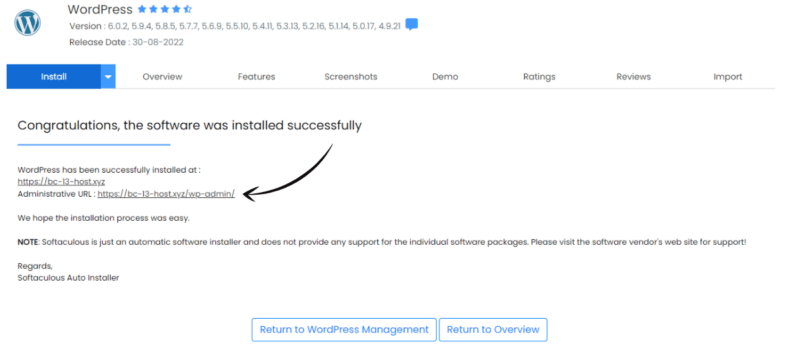
Then use the username and password you created earlier to log in. And that's it. Your WordPress blog is ready to go. Now let's install a theme.

4. Choose a Car Blog Theme
While you can use a free theme for your car blog, you'll constantly bang your head against the wall in frustration. Free themes lack a certain amount of customization most beginners require.
With that said, don't make the mistake of buying a bloated “multi-purpose” theme with all of the bells and whistles. Instead, opt for a lighter and more advanced WordPress theme, such as GeneratePress (the theme I'm using). Remember, your blog design is extremely important and shouldn't be overlooked.
Why GeneratePress?
GenerarePress is one of the lightest WordPress themes available for WordPress. The founder, Tom Usborne, built GeneratePress, focusing on speed and usability. Combined with their revolutionary block-based page builder, GenerateBlocks, you're only limited by your imagination.
Not only is GeneratePress fast and easy to use, but the support team is nothing short of amazing. I've yet to see a single customer's question go unsolved. Whatever you need help with, Tom and his team will gladly help you sort it out.
GeneratePress is the perfect theme for any car blog.
5. Install GeneratePress
After purchasing GeneratePress, you'll need to install it and import a starter site from their Site Library. To do so, follow the steps outlined below.
Step 1: Log in to your GeneratePress and click Download. Note the license key here because we'll need it shortly.
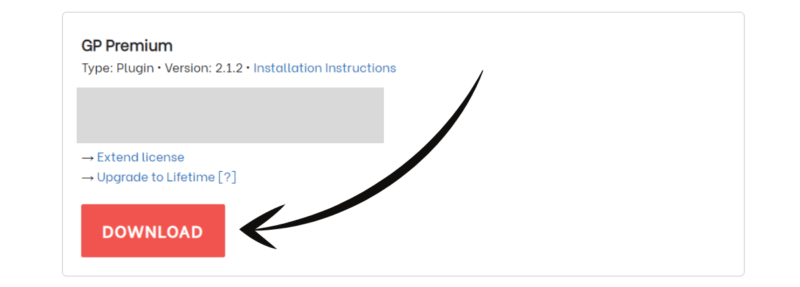
Step 2: Log in to your WordPress dashboard and navigate to Appearance > Themes > Add New.
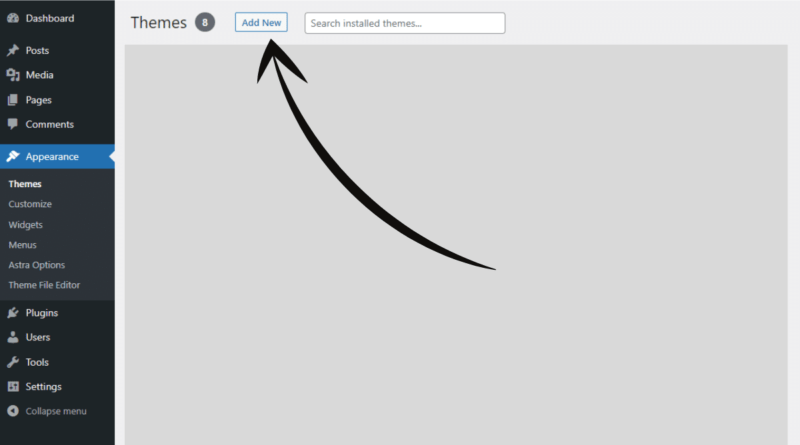
Step 3: Type GeneratePress into the search field, find GeneratePress, click Install, and then Activate.

Step 4: Navigate to Plugins > Add New > Upload Plugin.
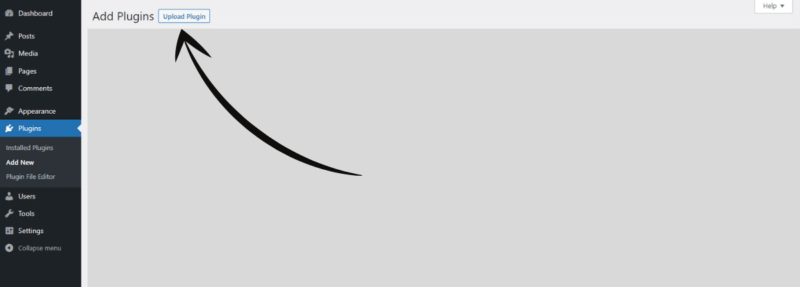
Step 5: Click Choose File and select your download file from Step 1. Afterward, click Install Now.

Step 6: Click Activate Plugin to continue.
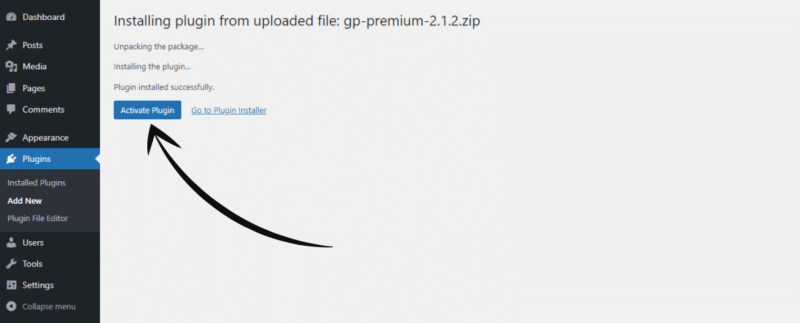
Step 7: Navigate to Appearance > GeneratePress and enter your license key from Step 1.

Step 8: After entering your license key, scroll down and activate the Site Library module.

Step 9: Click Open Site Library.

Step 10: Scroll through the Site Library's themes and choose the one you like. You can always come back and import others if you wish, so don't put much thought into it. Just choose one.
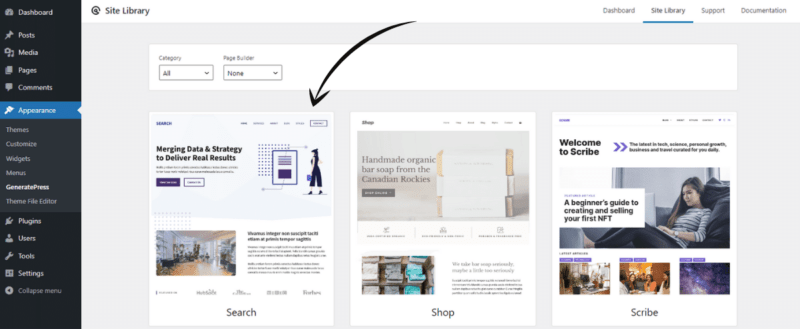
Step 11: Click Get Started.
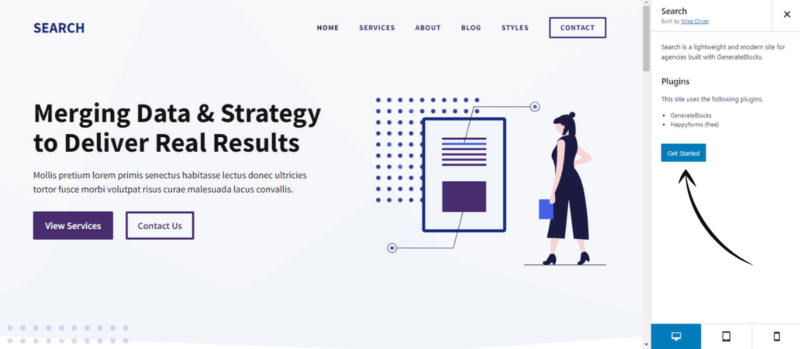
Step 12: Toggle I Understand and click Begin Import.

And that's it! Your site is ready to go. To customize your theme, look in the following locations:
- Menu – Appearance > Menus
- Site Settings – Appearance > Customize
- Posts – Posts > All Posts
- Pages – Pages > All Pages
- Other – Appearance > Elements
Note that you can also navigate to the page/post you wish to edit on the front end and click Edit Page, Edit Post, Customize, or Elements from the top admin bar.
Other Car Blog Themes
Here are some car-specific WordPress themes to help with more refined functionality and features.
6. Install Car Blog Plugins
WordPress is so fantastic because of the overwhelming amount of plugins designed to increase the quality of life for WordPress web admins. Without plugins, the average Joe wouldn't be able to do much at all. Use the following steps to install WordPress plugins.
Method One
- Navigate to Plugins > Add New
- Use the search field to search for plugins
- Find the plugin and click Install > Activate
Method Two
- Navigate to Plugins > Add New
- Click Upload Plugin
- Click Choose File (select your downloaded plugin)
- Click Install Now
- Click Activate Plugin
Recommend Plugins to Install
Rank Math – A Search Engine Optimization plugin that makes it easy for anyone to optimize their content with built-in SEO suggestions based on widely-accepted best practices.
BulletProof Security Pro – This highly-rated WordPress security plugin has everything you need to lock down your website, and it comes complete with a one-click setup wizard.
FlyingPress – A blazing-fast caching plugin built specifically to pass Google Lighthouse criteria.
WPS Hide Login – If you don't opt for an all-in-one security plugin, you should, at the very least, hide your login URL from the rest of the world.
GenerateBlocks – A block-based page builder built for speed and versatility.
CSS Hero – Tweak any website without any CSS knowledge or bloated plugins. CSS Hero is lightweight and capable of anything.
7. Create First Car Blog Post
To create the first post for your car blog, navigate to Posts > Add New from the WordPress dashboard, and you'll be treated with the Gutenberg editor.

This is where you'll write and publish all of your new posts.
Branding Your Car Blog
In the business world, branding is a complex subject that people spend their entire lives studying. In the blogging world, however, it isn't that serious. Here's what I recommend:
Create a Unique Logo
The first thing you need to do is create a unique and memorable logo. You can hire a designer on Fiverr to create it or give it a go yourself using a tool like Canva or Vectr.
The little icon that is used for browser tabs and search results is called a favicon and typically has a dimension of 512×512 pixels.
Choose a Color Scheme
After creating your logo, you'll need to decide on a color scheme for your blog. For example, I use a derivative of navy blue, gold, and white on Blog Champs. You can generate random color schemes on color.co.
Use Consistent Styling
Each page and post on your car blog needs to bare a consistent style and flow. This includes your colors, writing style, and the position of your page elements.
Growing Your Car Blog
As I mentioned earlier, starting a car blog is easy; however, growing and managing your blog will be challenging. Here are my recommendations to help you scale your new blog.
Keyword Research
Use a tool like Ahrefs Keyword Explorer to find low-difficulty keywords in your niche. The idea is to optimize your content around key terms to help users worldwide discover you in search engine results pages (SERPs) such as Google and Bing.
I recommend using Google's free Keyword Planner if you're operating on a budget.
Writing With AI
Writing takes a lot of time, but the research involved for each article requires even more! To be a successful car blogger, you must ensure that your writing is factual, impeccable, and SEO-optimized. Trust me, it's a ton of work!
To simplify this troublesome process, I wholeheartedly recommend that every blogger use content optimization/creation tools like Frase.
Want to speed up and supercharge your content brief with powerful competitor insights? With Frase, you can:
- Expedite writing with 40+ AI writing templates
- Get word, image, and heading count suggestions
- Perform deep-topic research to outrank your competitors
- Create outlines automatically using AI technology
- Create outlines manually by analyzing top URLs
- Add top questions from your topic to your outline
- Add top citations from your topic to your outline
- Analyze NLP-extracted key terms on your topic
- Write faster with advanced AI writing technology
- Focus on content creation instead of keyword research
Hire a Writer
If all else fails, you can always hire a freelance writer! And don't think of this as cheating. Your writer will be a valuable part of your team that assists you in your vision.
Helpful Blogging Resources & Tools
Here are some other useful WordPress and blogging resources to help you along your blogging journey.
Frequently Asked Questions
What is a car blog?
Car blogs are websites or blogs that focus on automotive topics. The content can range from reviews and the latest car releases to driving tips and advice. For those who are passionate about cars, a car blog is the perfect platform to share their knowledge and insights.
Why start a car blog?
Starting a car blog is a smart idea for many reasons. Maybe you know a lot about a particular car make or model and want to share that knowledge. Perhaps you are just passionate about cars and enjoy writing about them. Building a community around a shared passion like cars can be a meaningful way to connect with like-minded people.
How much will it cost to start a car blog?
Starting a car blog is completely free if you use a free blogging platform like Medium. However, this route limits the scope of your capabilities. Self-hosting a car blog allows much more freedom and possibilities. You can get started for as little as 2.99/month with HostArmada's Start Dock Plan. This includes a FREE domain, which is everything you need to get up and running.
Conclusion
Starting a car blog can be a profitable and life-changing experience. If you've been on the fence about it, I recommend you start today so that you'll be that much more ahead tomorrow!